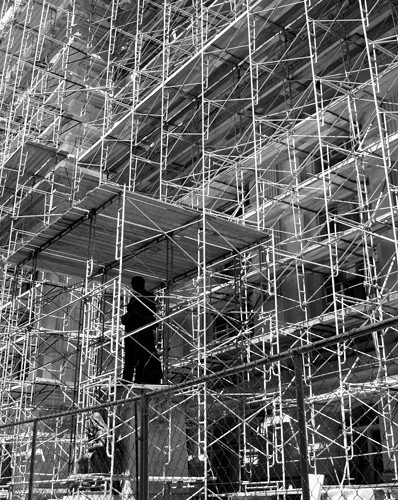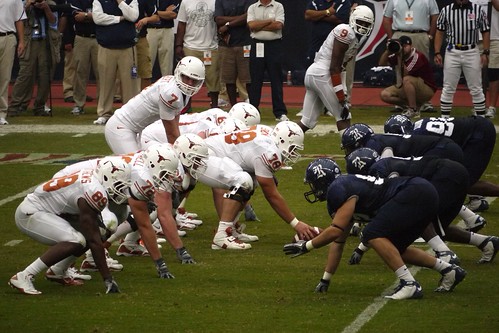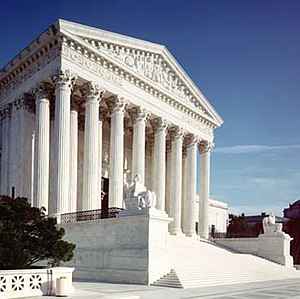 Note: This is an update on a post from 2007. Read the original post here.
Note: This is an update on a post from 2007. Read the original post here.
The system of health in this country is faced with some significant problems. First of all, it is not a system of health at all – it is a system of illness. Our current system emphasizes "prevention" and yet we still have an increasing rate of chronic medical conditions. For example, 57% of adults are overweight, with 1 in 4 having a body mass index of 30 - a level that is considered obese. We would like to believe that our medical system is the best in the world – but we spend 50 percent more on health care than any other country in the world and yet rank only 15th in preventable death, 24th in life expectancy, and 28th in infant mortality.
I’d say that is sufficient testimony to the failure of the system of “health” we currently have in place in the United States.
How many health-related issues do we experience that can be readily dealt with on the basis of self-care strategies alone? And does an effective system of health require a bunch of providers applying interventions, or can patients apply many of those strategies themselves?
There is a solution that will involve not only systemic change, but cultural change as well. It’s name is Competent Self Care. What is Competent Self Care, and why should any of us care?
 This episode of the Rhubarb Report is chock full of vitamins and minerals – well, actually, just a few hot topics recently found in the Republican wilderness. The debates have the Republican Party front and center with the media and the public, so it’s only fitting that there would be plenty of Rhubarb generated at these little shindigs. If you have been able to watch these debates without squirming at the potential ramifications of them, then more power to you. I am certainly not of strong enough stomach to ponder Bachmann or Perry as our next President.
This episode of the Rhubarb Report is chock full of vitamins and minerals – well, actually, just a few hot topics recently found in the Republican wilderness. The debates have the Republican Party front and center with the media and the public, so it’s only fitting that there would be plenty of Rhubarb generated at these little shindigs. If you have been able to watch these debates without squirming at the potential ramifications of them, then more power to you. I am certainly not of strong enough stomach to ponder Bachmann or Perry as our next President.
Onwards to this episode of the Report, where you will find the striking and perfectly coiffed presence of our own Governor Rick Perry.
 The mechanisms of exercise physiology have been described in great detail over the past 30 years. The sports medicine and sports sciences research is growing in leaps and bounds. So why is it that with all the “advances” in the science, athletes continue to sustain training-related injuries at an alarming rate?
The mechanisms of exercise physiology have been described in great detail over the past 30 years. The sports medicine and sports sciences research is growing in leaps and bounds. So why is it that with all the “advances” in the science, athletes continue to sustain training-related injuries at an alarming rate?
Is it because coaches continue to advocate traditional training approaches based on old research or anecdote? Or is it because very few attempts have been made to synthesize and integrate it into a unified “big picture” approach to human performance? In a system such as the human body, how could there be so much disparity between approaches to training? Why has so much attention been given to “genetics” and so little to “consistent training principles”?
After many years of reviewing the sports sciences and sports medicine research, I began integrating the research into a more unified approach. This started with a focus on the running and cycling literature. But it also expanded to some reading on systems thinking and chaos theory, fields of study far removed from the sports sciences realm.
By 1999, I had synthesized many diverse avenues of thought into what I have termed “Recovery-Centered Training”, a new model of human performance.
 The BYU Cougars arrived in Austin on Saturday and appeared to have done their homework. At least that is what you would have thought in the first half.
The BYU Cougars arrived in Austin on Saturday and appeared to have done their homework. At least that is what you would have thought in the first half.
Ahh, a tale of two halves – again. It’s a common theme in Longhorn football and has been for quite some time now.
Against Rice, the first half offensive plan had shades of (yawn) Greg Davis in it; the second half looked more like sandlot football (aka Boise State). We all know which half was most effective and certainly most entertaining. With that in mind, I thought that the Longhorns coaching staff would watch some video, learn some lessons, and enter the game against BYU with the most effective of the two options right out of the gate. I was sadly mistaken.
 My story is probably pretty similar to many others. On September 11, 2001, I awoke to a beautiful, sunny day in Austin, Texas. I had my breakfast and my coffee, just like I would typically do any other day. I drove to the office, just like I had many times before. I listened to the radio on the drive in to the office.
My story is probably pretty similar to many others. On September 11, 2001, I awoke to a beautiful, sunny day in Austin, Texas. I had my breakfast and my coffee, just like I would typically do any other day. I drove to the office, just like I had many times before. I listened to the radio on the drive in to the office.
It was just another typical day, right? As we all know, this day would be far from typical. Each passing moment seemed to present a new horror, beamed directly into our homes and our consciousness by the power of digital media.
On Wednesday, September 12, 2001, I awoke to the same sunshine, the same coffee, the same drive to work – but a world that had been forever changed. All those typical things weren’t so typical anymore. It was, as Don Henley once noted, “the end of the innocence”.
Looking back from a perspective 10 years removed, we will never take the pain away from 9/11/01. But we must also remember 9/12/01 and hold our heads high. It was the dawn after the dark. After the shock and anguish of the day before, it was the day that we got up off the mat, the day we were strongly reminded of the values that are at the core of this great country. It was a day that we pulled together – one nation, indivisible.
 Almost as soon as President Obama passed a rather diluted version of health care reform, there were claims of it being unconstitutional. With that said, a number of lawsuits were filed. Just this past week, a judge dismissed two of Virginia’s legal challenges to the new health care law. Apparently, at this time, health care reform is within the bounds of the Constitution. I am sure this battle will continue.
Almost as soon as President Obama passed a rather diluted version of health care reform, there were claims of it being unconstitutional. With that said, a number of lawsuits were filed. Just this past week, a judge dismissed two of Virginia’s legal challenges to the new health care law. Apparently, at this time, health care reform is within the bounds of the Constitution. I am sure this battle will continue.
What happened when Medicare was put in place? Was it considered unconstitutional as well?
This behavior tends to be apparent when people (and lobbyists) simply don’t agree with policy and legislation. Go ahead, file a lawsuit. Place the blame on a breach of the constitution. Lawsuits have a great way of holding up the process or even preventing the law from ever seeing the light of day.
Is health care reform truly unconstitutional?
 There is a lot of debate these days on illegal immigration. I think it is fair to say that it is a divisive topic at the very least.
There is a lot of debate these days on illegal immigration. I think it is fair to say that it is a divisive topic at the very least.
I find this a very intriguing topic because I myself am a legal immigrant to this country. I went through all of the standard procedures to be able to reside and work in this country legally and have the privilege to pay taxes just like all the rest of you hard-working citizens.
But then I found out that there are over 13 million illegal aliens and U.S.-born children in the United States, even though there are laws prohibiting it. There are laws prohibiting an employer from hiring an illegal immigrant. Do we need more hard-core immigration laws like they have instituted in Arizona, laws which some believe border (no pun intended) on racial profiling? Do we need to just build a big wall around the country? Or are all the solutions we need already in place?
 "Running Injuries: Etiology And Recovery- Based Treatment" (co-author Bridget Clark, PT) appears in the third edition and fourth editions of "Clinical Orthopaedic Rehabilitation: A Team Approach" by Charles Giangarra, MD and Robert C. Manske, PT.
"Running Injuries: Etiology And Recovery- Based Treatment" (co-author Bridget Clark, PT) appears in the third edition and fourth editions of "Clinical Orthopaedic Rehabilitation: A Team Approach" by Charles Giangarra, MD and Robert C. Manske, PT.
 Allan Besselink, PT, DPT, Ph.D., Dip.MDT has a unique voice in the world of sports, education, and health care. Read more about Allan here.
Allan Besselink, PT, DPT, Ph.D., Dip.MDT has a unique voice in the world of sports, education, and health care. Read more about Allan here.
 Top 5 finalist in three categories: "Best Overall Blog", "Best PT Blog" and "Best Advocacy Blog".
Top 5 finalist in three categories: "Best Overall Blog", "Best PT Blog" and "Best Advocacy Blog".